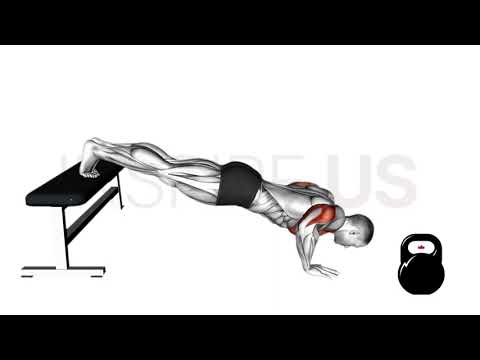Decline Push Ups: Benefits, Muscles Worked, and More
Although the regular push-up is perfectly effective in its own right, more advanced calisthenic athletes may wish to further increase the intensity of each repetition, be it for the purposes of saving their joints some strain, or because they wish to progress towards exercises like the handstand push-up.
Enter the decline push-up: an otherwise conventional push-up made more intense by placing the feet at a higher elevation than the rest of the body, causing more of the lifter’s weight to shift towards their upper body.
For an in-depth analysis of the decline push-up, read on.
But if you just want the bullet points - the decline push-up is simply a conventional push-up performed with more resistance (weight) being placed on the muscles of the upper body. This leads to a lesser need for high volume sets, and helps the lifter build up mass once regular push-up intensity just doesn’t cut it.
What are Decline Push-Ups?
In a more technical definition, the decline push-up is a multi-joint compound calisthenic movement best used as a primary compound exercise within a bodyweight workout - although it can also act as a secondary exercise of lesser intensity to the bench press or weighted dip.
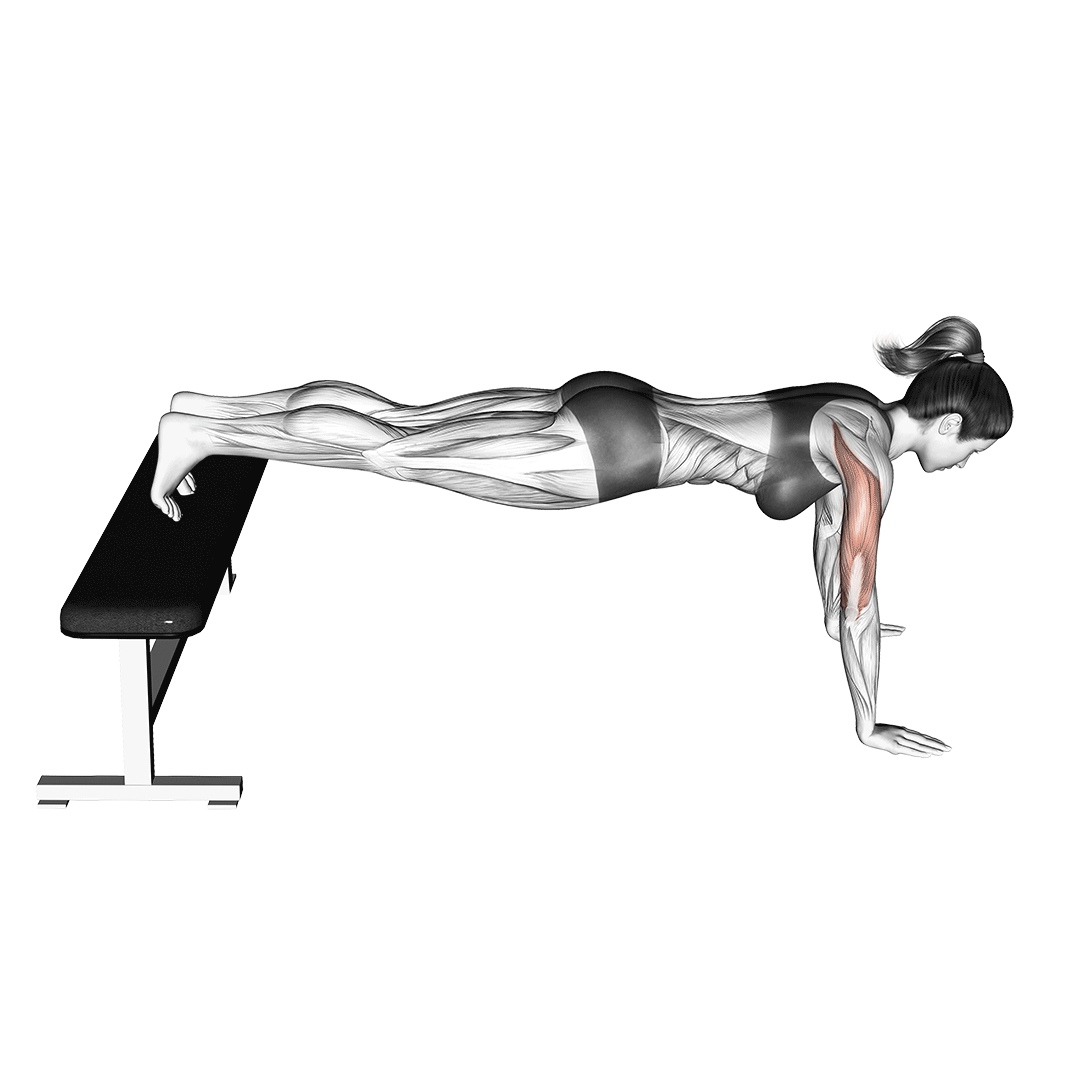
The decline push-up is considered to be the next progression step once regular push-ups are no longer effective, and will generally feature greater emphasis on the upper portion of the torso (such as the upper chest and deltoids).
Who Should Do Decline Push-Ups?
Decline push-ups are considerably more difficult than conventional push-ups, and as such are more appropriate for exercisers of at least an intermediate level of familiarity with bodyweight training.
In particular, bodybuilders and calisthenic athletes will be the individuals who benefit the most from the decline push-up, as its capacity for upper body hypertrophy and its usefulness as a progression tool align quite well with both types of athletes.
How to do a Decline Push-Up
To perform a repetition of the decline push-up, the lifter will enter the standard push-up stance by placing their feet atop an elevated object as they extend their arms beneath the torso. The body should form a rigid line from the feet to the head, with the core contracted and the lower back held in a neutral position.
With the hands placed wider than shoulder-width apart, the lifter will then bend at the elbows and slowly lower their torso towards the ground, ensuring that their core remains firmly contracted throughout the movement.
Once the chest is within several inches of touching the ground, the lifter will then push through the palms of their hands and extend their elbows once more, returning to the starting position and therein completing the repetition.
What Muscles are Worked by Decline Push-Ups?
Decline push-ups are categorized as a compound exercise, meaning that more than a single muscle is involved.

These muscles are divided according to the manner in which they contract, with muscles moving in a dynamic fashion being referred to as primary and secondary movers, whereas those used in an isometric capacity are simply called stabilizer muscles.
Primary and Secondary Mover Muscles
Decline push-ups utilize the pectoral muscles, the triceps brachii and the anterior head of the deltoids as primary movers.
In addition, muscles like the serratus anterior and pectoralis minor also act in a dynamic fashion, albeit to a lesser intensity.
Stabilizer Muscles
In terms of isometric contraction, the muscles of the abdominals, obliques, erector spinae and glutes are used.
What are the Benefits of Doing Decline Push-Ups?
Decline push-ups take an already effective exercise and increase the intensity of each repetition - thereby also intensifying the benefits received.
Much of these benefits revolve around the significant muscular growth that decline push-ups can induce, but some are more specific to the discipline of calisthenics, and as such also make the decline push-up an excellent tool for bodyweight athletes.
Excellent for Tricep, Deltoid and Chest Growth
Although decline push-ups feature a somewhat lower capacity for volume than conventional push-up variations, they make up for it by shifting more of the lifter’s own weight towards the muscles of the upper body.
In particular, the deltoids and pectoralis muscles will bear even more resistance, leading to greater hypertrophy and strength adaptations.
For the best results from decline push-ups, lifters should seek to keep the intensity of each set at a high level - landing somewhere between 7-9 on the Borg RPE scale.
Heavier than Conventional Push-Ups
After some time spent training with bodyweight exercise, athletes will find that they will have to perform more and more volume of the same movement in order to achieve the same level of training intensity. This can be time consuming, and place unneeded repetitive strain on the soft tissues of the body - potentially leading to injuries.
One solution to such problems is to perform exercises that leverage more of the athlete’s weight against them, such as with the decline push-up.
Because the decline push-up is relatively heavier, less volume will be needed in order to attain the needed level of intensity and the correct kind of training stimulus.
Acts as Progression to Advanced Calisthenic Exercises
The decline push-up is one of the most important exercises for calisthenic athletes, as it acts as the cornerstone of any advanced inversion exercise.
Handstand push-ups, pike push-ups and a number of other exercises are all loosely similar to the decline push-up in terms of muscular recruitment and mechanics.
For athletes wishing to one day perform highly advanced bodyweight exercises, mastering the decline push-up is a must.
Carryover to Other Upper Body Activities
Even in cases where the individual performing decline push-ups is not necessarily a calisthenics enthusiast, the sort of training stimulus and muscular development achieved by the exercise allows for improvements in other activities involving the upper body.
Whether this is a barbell bench press, a boxer’s strike or even completely ordinary day-to-day activities - the decline push-up will provide some level of carryover therein.
Common Decline Push-Up Mistakes
Although the decline push-up is mechanically similar to the conventional push-up, there are nonetheless a few mistakes that are more common in the decline variation itself.
Each of these mistakes should be accounted for when performing the exercise, as allowing the lifter to continue making them can potentially lead to an ineffective workout or even injury.
Sagging Torso or Bending the Knees
In order to avoid overly-straining the joints of the body or otherwise recruiting muscles that should not be, it is important for the entire body to remain rigid and relatively straight throughout each set.
This is achieved by contracting the core muscles and ensuring that the legs are fully straight, with the glutes squeezed so as to better stabilize the lower back as well.
Performing the Repetitions Too Rapidly
Just as is the case in many other exercises, performing the decline push-up in too rapid a fashion can cause excessive momentum to be generated - potentially injuring the lifter and negating the benefits of the exercise itself.
In order to maximize time under tension and ensure that the lifter remains safe throughout the set, each repetition should be performed in a slow and controlled manner, with care being taken to complete a full range of motion.
Failing to Keep a Neutral C-Spine
Although the declining angle of the torso may tempt the lifter to extend their neck downwards, doing so can strain the muscles of the neck and trapezius, as well as place much unneeded pressure on the cervical section of the spinal column.
It is best for lifters to perform the decline push-up with their neck held in a neutral position, avoiding excessive tucking of the chin or extension of the neck.
Incorrect Hand Placement
A rather common stance issue for lifters transitioning to the decline push-up is the placement of the hands. Because of the lower body being elevated over the head, the first instinct may be to take on a significantly wider stance than normal so as to balance better.
This can shift training stimulus away from the triceps brachii and shorten the range of motion of the movement, meaning that less development will be derived from the exercise.
During the decline push-up, the ideal hand placement is just slightly wider than shoulder-width apart, placed parallel with the shoulders along a horizontal plane.
Progression Exercises for the Decline Push-Up
Whether you’re planning to perform a decline push-up in the future or already can and wish to progress further, the following progression exercises are a good place to start.
Note that these exercises are ordered chronologically, meaning that the exercises meant to be performed earlier in the lifter’s training career are listed first, with more advanced exercises being listed later.
Incline Push-Ups
For lifters who are new to calisthenics and cannot yet perform a full set of push-ups, the incline push-up is the ideal starting point.
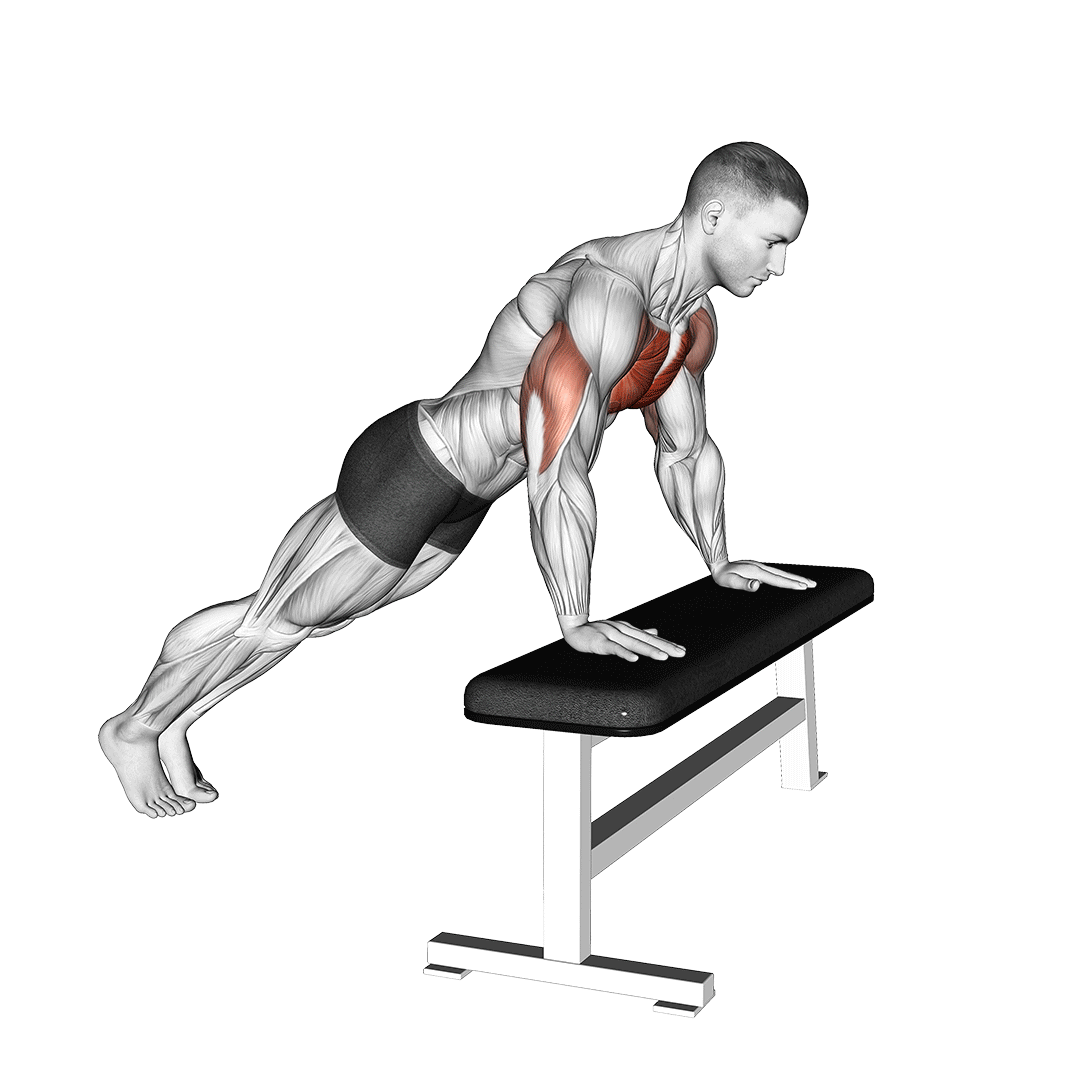
Incline push-ups are the opposite of decline push-ups, where instead of the lower body being elevated over the torso, the torso is angled upwards so as to reduce how much of the body’s weight is being lifted with each repetition - thereby allowing novices to perform sufficient volume.
Conventional Push-Ups
The conventional push-up is the next step in progressing to a decline push-up, and likely the exercise that comes to mind when “push-ups” are mentioned.
They are performed for high volume sets, and share much of the same benefits as decline push-ups, save for a lesser level of resistance and intensity per repetition.
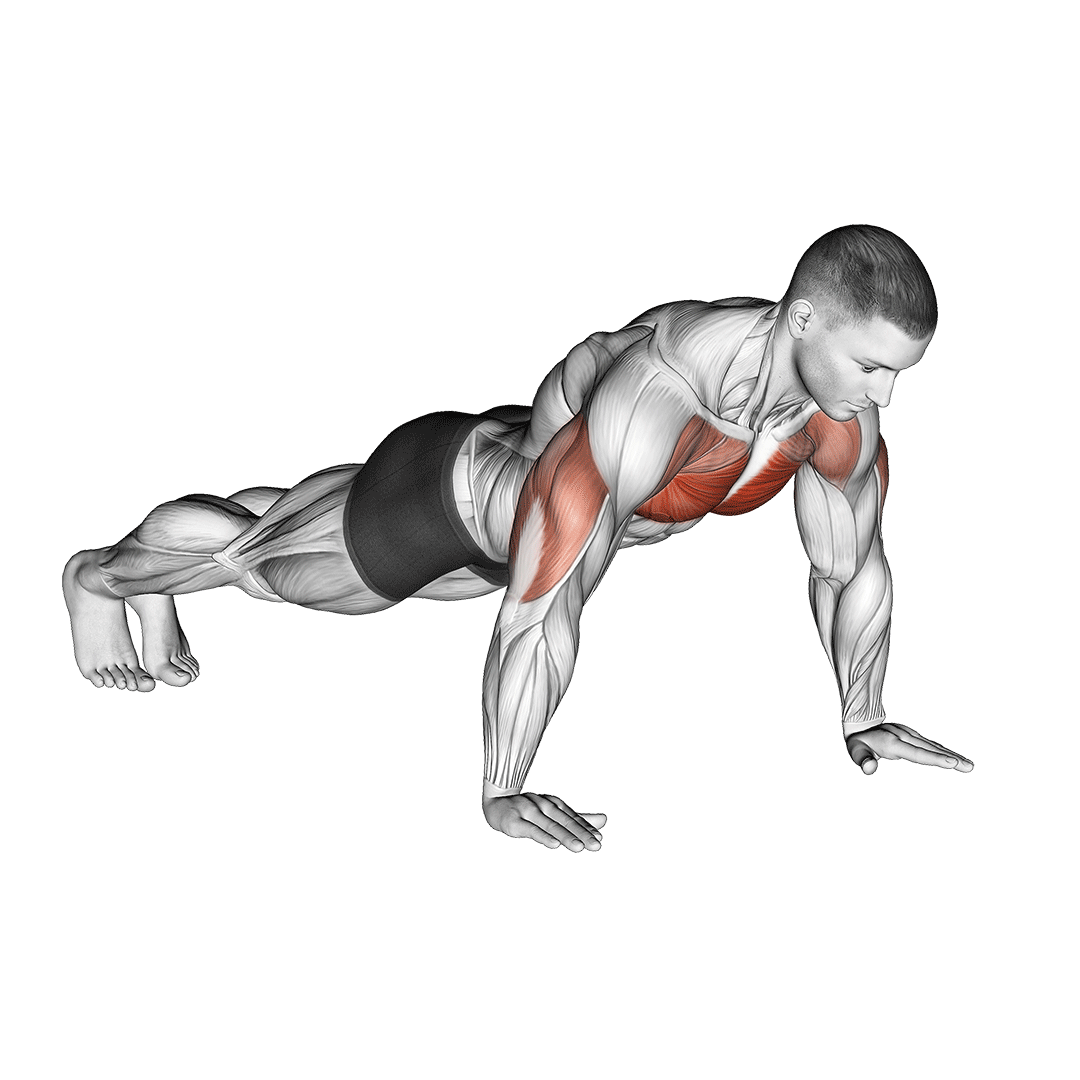
Decline Knee Push-Ups
One optional step between performing regular push-ups and decline push-ups is the decline knee push-up; simply a decline push-up performed with the knees elevated atop the object, rather than the feet.
This reduces how much weight is being placed on the upper body while simultaneously familiarizing the lifter with the correct decline push-up mechanics, and as such is the perfect progression step prior to a full decline push-up.
Pike Push-Ups, Handstand Push-Ups and More
Once the lifter has mastered the decline push-up, they may progress further on to advanced calisthenic exercises like the pike push-up and handstand push-up. This can allow them to attain an even more powerful and muscular physique, as well as allow them to truly master calisthenic exercise as a whole.
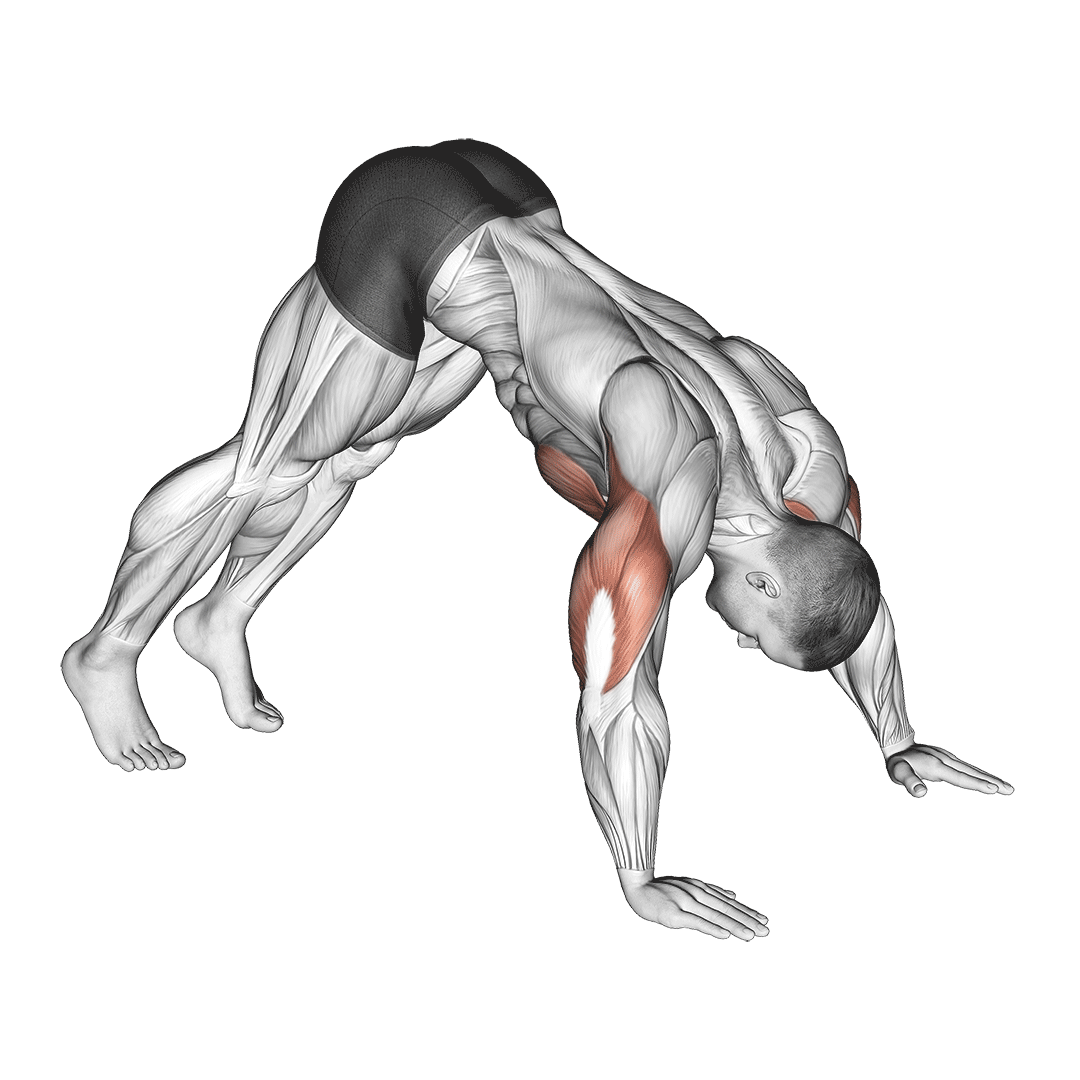
Frequently Asked Questions (FAQ)
Are Decline Push-Ups More Effective?
Yes - decline push-ups are one of the most useful push-up variations due to the inherently greater amount of weight being moved with each repetition. This allows the lifter to maximize development in their shoulders, arms and chest without the need for lengthy and exhausting sets.
Are Decline Push-Ups Good for Lower Chest?
Not necessarily.
In terms of which push-up better targets the lower chest, the incline push-up is surprisingly more effective at doing so. However, the greater intensity and resistance of the decline push-up may make it a better choice for more advanced lifters who find the incline push-up to be too easy.
Are Pike Push-Ups Better Than Decline Push-Ups?
The pike push-up can be considered to be a more advanced form of the decline push-up, as it features a similar angle of resistance but shifts more of the weight towards the deltoids and upper chest - as well as a greatly increased intensity.
In short; yes, the pike push-up is arguably better than the decline push-up. However, lifters seeking greater full-chest development may wish to pick the decline push-up instead.
Final Thoughts
The decline push-up is a solid intermediate calisthenic exercise that is perfect for learning more advanced exercise mechanics, as well as building up mass in the largest muscles of the upper body.
When performed with correct form and proper programming, the decline push-up can be an excellent tool for any number of possible training goals. Give it a try and experience the many benefits of this classic bodyweight movement.
References
1. Ebben, William P; Wurm, Bradley; VanderZanden, Tyler L; Spadavecchia, Mark L; Durocher, John J; Bickham, Curtis T; Petushek, Erich J. Kinetic Analysis of Several Variations of Push-Ups. Journal of Strength and Conditioning Research 25(10):p 2891-2894, October 2011. | DOI: 10.1519/JSC.0b013e31820c8587

